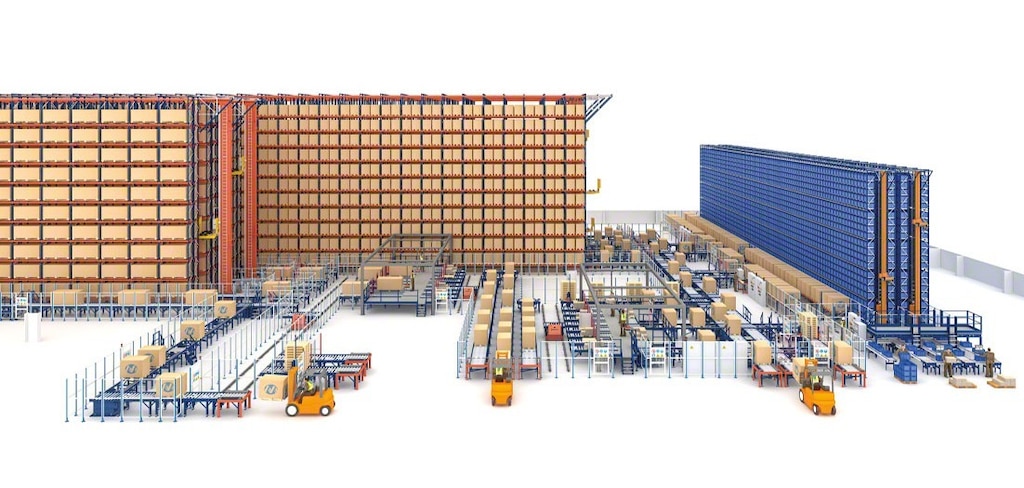LOGISTICS RESEARCH
Warehouse automation is on the rise around the world. How can operators and industrial robots work together to increase productivity? New findings from the Technical University of Munich and the University of Cologne in Germany reveal research-backed mechanisms to improve collaboration between warehouse workers and their robotised teammates.

As logistics facilities become more automated, the number of robots working alongside staff is growing. “Hybrid settings are needed in many cases, as neither unaided workers nor full automation is as effective as combined work,” says Professor Alexander Hübner, lead author of the study New teammates in the warehouse: Human interactions with automated and robotised systems.
According to Hübner, Professor of Business Administration at the Technical University of Munich, managers must prepare themselves and their teams for further human֪–robot interaction: “It’s imperative to understand and account for workers’ human factors in operational activities to establish efficient automated and robotised warehouse systems.”
4 research-backed tips for improving collaboration between workers and robots
The researchers analysed human–machine interactions in warehouses through a behavioural lens. The goal was to understand how operators’ actions can enhance hybrid work performance.
The findings show that to improve decision-making and collaboration in robotised facilities, managers need to consider the following four research-backed tips:
1. Form effective human–machine warehouse teams
Sharing the same space with robotised systems triggers different human behaviours and group dynamics. To make automation successful, managers need to pay attention to how robots are perceived and introduced in the facility.
The findings reveal that trust and technological acceptance are critical success factors when managing effective human–machine teams. “Several practitioners have reported that a lack of trust hampers hybrid warehouse performance. For companies to ensure effective human–machine teams, it’s crucial to establish mechanisms that strengthen cooperation and collaboration between operators and robotised systems,” says Hübner.
2. Hire and train the right employees for proper human–machine interaction
Collaborating with robots requires specific professional competencies. Aspects such as personality traits, preferences and skills vary among employees and thus play a crucial role in managing efficient warehouse set-ups. “Recognising an individual’s skill set is critical to understanding which worker to deploy for which task, as individual human performance varies even in standardised activities,” says Hübner.

For instance, working with robotised systems may require skills such as programming capabilities, troubleshooting skills to resolve workstation blockages and personal competencies such as an eagerness to adapt to adjusted tasks. Companies need to hire, train and employ the right workers based on the operational task at hand to ensure productive collaboration. The researchers argue that “given high fluctuation rates in general and large temporary labour needs during peak demand periods, it is crucial to learn how to attract and retain labour for human–machine interactions.”
3. Assign tasks and develop operating policies for humans and machines
Interacting with robots involves task interdependence, making human and machine performance dependent on reciprocal actions. Logistics managers need to find the optimal balance when assigning tasks to operators and robotised systems. “Addressing how to effectively leverage the strengths of humans and machines, how to distribute the workload within human–robot teams and how to design the workflow becomes indispensable,” write the researchers.
When working in hybrid environments, operators tend to compare themselves with machines and have preferences concerning specific tasks, processes and settings. To reach optimal human–robot collaboration, managers need to establish mechanisms that ensure feedback, transparency and autonomy — three aspects that, according to the experts, can boost worker motivation and satisfaction and thus increase performance.
4. Design engaging and direct human–machine interactions
With increasing automation, managers need to design engaging interactions to make the warehouse an attractive workplace for employees.
Mental and physical workloads must be distributed properly to ensure operators and machines are assigned the best tasks. For example, a high physical workload and a low mental workload may reduce efficiency and quality. So, finding the right balance between robots and workers’ tasks is crucial to improving work engagement.
Besides a balanced distribution of tasks, managers can also create more engaging human–machine interactions by setting goals and incentives. This approach can help operators be more engaged in the workplace and perform better.
Successful human–robot collaboration
According to the researchers, these four tips for improving human-machine interaction can help warehouse systems providers and engineers design better solutions and assist logistics managers with better decision-making.
“We demonstrate that interactions with robotic systems are prevalent, showing the enhanced relevance of autonomy in intralogistics, also given their flexibility and scalability,” conclude the authors.
Lorson, Fabian, Andreas Fügener and Alexander Hübner. 2023. New Team Mates in the Warehouse: Human Interactions with Automated and Robotized Systems, IISE Transactions, June, 1–18.
